Following the steps of his popular father, Tom Ziglar, the CEO of Ziglar Inc., shares what it’s like being the son of Zig Ziglar. Tom joined the Zig Ziglar Corporation in 1987 and climbed from working in the warehouse to sales, to management, and on to leadership. Carrying on the Ziglar philosophy, “You can have everything in life you want if you will just help enough other people get what they want,” he shares innovations and world-class coaching to thousands of clients who are hungry for inspiration, motivation, and hope. In this episode, Tom defines success, significance and legacy and shares their performance formula of every top performer in any field. He also introduces his book, Choose to Win, and what he hopes to accomplish with it.
Transforming businesses into influential entities is a monumental task, something that Kathy Ollerton Krafchow always finds as a challenge. Kathy is a coach, mentor, trainer, and speaker who is passionate about helping people transform themselves and their businesses. She talks about how she got into consulting with top leaders and doing her work on transformation, as well as how she deals with leaders who have to work with cultural issues in different countries and areas. Kathy outlines her seven steps to accountability, and talks a little bit about the hospital and school she built in Afghanistan for young girls.
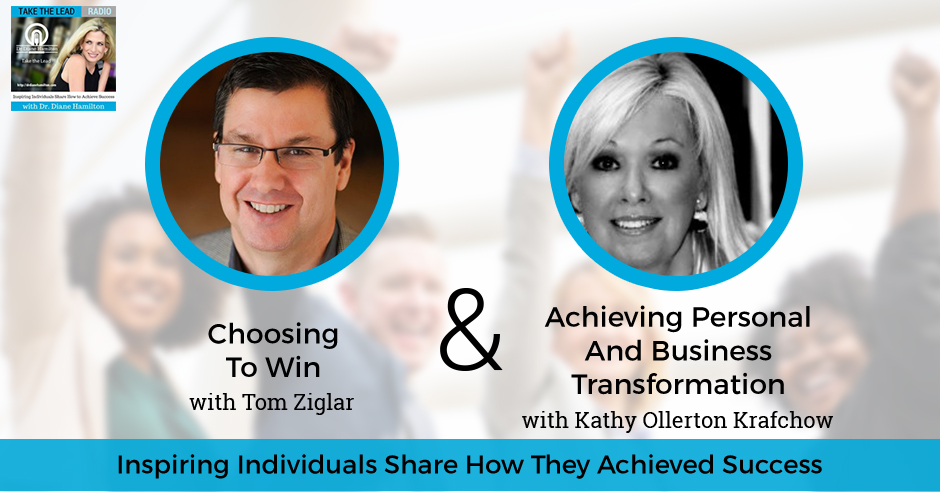
I’m so glad you joined us because we have Tom Ziglar and Kathy Ollerton-Krafchow. Tom is the proud son of Zig Ziglar and the CEO of Ziglar Inc. He’s also written a book called Choose to Win. Kathy Ollerton-Krafchow is also a coach, mentor, trainer and speaker. We’re going to learn a lot from both of them about some of the things we can do to be better in leadership.
Listen to the podcast here
Choosing To Win with Tom Ziglar
I am here with Tom Ziglar who is the proud son of Zig Ziglar and the CEO of Ziglar Inc. He joined the Zig Ziglar Corporation in 1987 and climbed from working in the warehouse to sales, to management and on to leadership. He speaks around the world, hosts The Ziglar Show and has one of the top-ranked business podcasts. He carries on the Ziglar philosophy, “You can have everything in life you want if you will just help enough other people get what they want.” He is the author of Choose to Win. I’m excited to have you here, Tom. Welcome to the show.
Thank you so much for having me on. I’m honored.
I’m honored. I never got to see your dad speak live, but I had a lot of his CDs back then. I used to listen to it in the car. He’s the guy. What is it like to grow up with Zig Ziglar as a father? I’m sure everybody asks you that, but I want to know.
As good as he was on stage, he was even better off stage. He’s genuine and loving. I don’t know if anybody is more blessed than my sisters or me to have mom and dad as our parents. Dad was an introvert at home. He’s quiet. Whenever you had a conversation with him, you were the only one there. That was incredibly valuable. When he would teach us things, he usually did it through questions. He wanted us to learn how to think through it and answer the question for ourselves. He was there to help us if we started to go down the wrong path.
I love that he asks you questions because I research curiosity in my books and everything about curiosity. It’s such a huge and important topic to me. I assume you’ve always been a highly curious person.
[bctt tweet=”Only 20% of the population is goal-oriented.” via=”no”]I am. One of my friends said, “Tom, you’re an intellectual engineer.” I got a big head. That sounds pretty good. I looked it up on Google, the acronym for it is NERD. When it comes to human performance and why do things work, it’s what drives my brain nuts. I want to know the foundation, the why and what’s the driver behind this that makes it go. I am very curious. I learned that from dad. Anytime he was trying to figure something out, he would go, research it and call his expert friends. He would get into it, hook, line and sinker.
Wozniak wrote in iWoz and said his dad was like that. He taught him real foundational ways of thinking, to question why the electricity brings this through this chord or that thing. We have families that are like that, that’s a big part of what can make be inquisitive and not be afraid to explore things. You have a legacy of your own. You’ve done so much work with the Zig Ziglar Corporation and everything you do. I’m curious how you define legacy since you’d have to deal with it in your father. What’s your insight on that?
There are three things that we try to define all the time, success, significance and legacy. I have different definitions for each one of them. For success, I use dad’s definition. It’s the maximum utilization of the abilities that God gave you. Significance is when you help someone else be, do or have more than they thought possible. Success is about yourself. Significance is helping someone else. Legacy is when you teach and transfer the habits that build character, integrity and wisdom that will ripple through eternity.
For my dissertation, I wrote about emotional intelligence, which is a lot about understanding yourself and others. You’re dealing with both of those in what you talked about. That’s a big part of perception as well, of how we see ourselves, how others see us and how we can get along in the workplace. It’s so hard for some people to see the impact of perception. Do you deal with that? You train success, significance and all these other things. How much does perception impact our success?
I don’t know if there’s anything more important than perception. It’s incredibly important. I remember having a conversation with Seth Godin. I don’t know if he was quoting somebody else but he said, “The most important story we’ll ever hear is the story we tell ourselves.” It starts with our perception of ourselves. Are we an accident, everything’s against us and nothing ever goes our way? Are we unique and have things that nobody else has? It’s up to us to use it. It’s those two things. In the book Born to Win, there’s a little section about two identical twin brothers.

Choose To Win: The most important story we’ll ever hear is the story we tell ourselves.
They interviewed the first one. He was in prison for 40 years. They said, “Why did you end up in prison?” He said, “I had an abusive alcoholic father who did nothing but demean me. Why wouldn’t I be here?” They interviewed his identical twin brother. They said, “You owned nine businesses and you’re an icon in the community. You’ve given millions to charity. How do you explain that?” He said, “I had an abusive alcoholic father. I spent my whole life trying to be the opposite. How could I be anywhere but here?”
I’ve talked to a lot of people about this. When you have two siblings, whether they’re identical or not, growing up in the same situation, it seems like there usually is one who will go one way and one who will go another way. Some people just tell themselves. It’s that voice in your head and that’s one of the factors I found that keep people from being curious. It’s our assumptions and that voice that we tell ourselves. It’s how long we keep saying these same things of what we can do and what we can’t do that can stop us. That’s what is so important. A lot of it is goal-setting and creating patterns of what we expect for our day and different things like that. You’ve made a science out of goal-setting at the Ziglar Company. What’s the best way to set a goal? What’s the latest?
I got some new information, which is intriguing to me. Only 20% of the population is goal-oriented. Only 20% get a real kick out of looking into the future saying, “That’s what I want. I’m going to set that goal.” They break it down and go after it. About 80% of the population is problem-solving-oriented. They’re the ones with a to-do list. They like to identify the problems, prioritize them, check them off and get them done. Here’s the interesting thing. We have a seven-step process that we teach for goal-setting, the Ziglar Seven-Step Goal-Setting Process. If you replace the word goal-setting with problem-solving, it’s the same exact system.
Step one is to identify the goal that you want to achieve. If you’re a problem solver, more power to you. Identify the problem you want to solve. Step two is to identify the benefits you’ll receive by achieving this goal. You can put in, “By solving this problem.” What is happening when I do the training on it is you could see light bulbs go in the room because people no longer feel guilty for being problem-solving-oriented. Then it empowers them to use the system with that little switch and instead of feeling guilty like, “Goals don’t motivate me as they should,” they get excited because they’re better equipped to go solve even more problems.
I teach a lot of people how to overcome some of the problems that keep them from being curious. One of them is often fear. A lot of it is fear of looking stupid or something like that. That’s why they don’t volunteer ideas in meetings or ask questions in meetings. If, instead of your goal, that’s your problem you want to solve, how can they make that a good goal? Make it a SMART Goal by making it measurable and attainable and is it still the same SMART-type things that we do along with it?
[bctt tweet=”There’s a new study out that constructive criticism has the opposite result.” via=”no”]We teach a little bit different system than the SMART Goal system. I like the smart goal system. I think it’s great. I ask people which goal system works. It’s the one you use. Our seven steps are, identify it, write down the benefits, write down all of the major obstacles or challenges you’ve got to overcome, the knowledge or information you need to gain and the people you need to work with. Those are the first five. Those are all the obstacles that are like, “I want to run a marathon.” If you just say, “I’m going to run a marathon,” and you put a date. You don’t have any of like, “I need running shoes. I should go see a doctor,” and then you put your plan of action.
Usually, people jump right into the plan of action. Around curiosity to me, I would identify that as biases that you bring to the table. I’ve studied that a little bit, not as much as you have. I have a little saying on my wall, “What we already know is usually the greatest blocker to what we need to know.” That’s our bias. We’ve got experience and that’s the way it always is. You got to retrain your thinking. I’ll give you an example. One of the trainers is a mental coach. He’s a brain expert. I said, “I want to get in better shape. What’s a little self-talk routine that I could do that would help me get in better shape?” He said, “Repeat this as often as you can, I’m getting fitter and fitter every day in every way.” He’s the expert so I started doing that. I wasn’t stupid. I was doing it in the car by myself.
One day, I go to the mall. I’m like a vulture when it comes to parking spaces. Even when I go to the gym, I want to park right next to the elevator to go to the second floor. I don’t want to walk any extra. I go to the mall and I parked my car. I’m walking in and I stop in the middle of the parking lot. I look around and there are 40 spaces between me and the front door and they’re all empty. I said, “Why did I park here?” It’s because I’ve read a thousand times that one of the greatest ways to burn a few extra calories is to park a little further than you normally do to wherever you’re going. Because I had been giving my mind that instruction, “I’m getting fitter and fitter every day in every way,” it was trying to figure out ways to make that happen.
I parked further from the door just automated because I’ve given a new instruction. If somebody wants to be more curious, I will do that routine. I would study, “What are the things that are keeping me from being curious?” I would plant in my mind something like, “I’m getting more curious every day in every way.” When you’re at a social event and somebody comes at you with the political view you’ve always disagreed with, instead of rejecting it outright, you suddenly put yourself in their position. “Why are they thinking that way?”
It’s such a big part of empathy. It’s such an important developmental skill, to have emotional intelligence. You brought up some important things about ways we can improve. I’ve seen Tony Robbins speak in front of people live and they talk about the different things they do for setting their routine of what they do. Tony takes an ice bath or something that I have not done. Do you do to the ice bath thing? Do you do something else? Do you have some morning routine that you think is helpful or is that just individual?

Choose To Win: The performance formula is Attitude x Effort x Skill = Performance. You will never see a top performer in any field who doesn’t have all three of those going for them.
We’ve interviewed a number of people who are leaders in that. One of the common things is to do something first thing that stretches you out of your comfort zone. The ice bath is an example of that. What it tells you is that you are in a position to feel good about doing something you’ve never done before because that’s going to be okay. You took an ice bath. What could be worse than that? It’s weird how it works. There’s a new study out that constructive criticism has the opposite result. When somebody on our team messes up and we’re the leader, we usually go to him and say, “Let’s look at what happened. This result wasn’t what we wanted. This is how you handled it wrong. This is how you handle it right the next time.” We think we’re training them and giving them ideas on how to handle it the next time, but what we’re doing is telling them that, “If you’re ever out of your comfort zone, don’t do anything because you might get in trouble.”
I’ve seen a lot of that. That thing’s shutting people down. I’ve had leaders who don’t see that. They think, “That was effective because that’s the way my leader led me.” What do you tell them to do instead?
It’s much more collaborative. I’ll go back to when dad asked me great questions. When I was nineteen and twenty years old and it was the summer after my junior year in college, I wanted to be a pro golfer. I had my whole summer all set up with tournaments to play and lessons to take. Dad comes home and says, “Your mom and I are going to go on a speaking tour in Australia for about a month. I need you to take care of the house.” Those Australians are mean and their bags are heavy. I looked at him and said, “You need me to go to Australia with you and carry those bags.” Who doesn’t want to go to Australia when you’re single and nineteen? He looked at me and said, “Do you still want to be a professional golfer on the PGA Tour?” I said, “Absolutely.” He said, “Don’t you have a pretty full summer schedule with practice and tournaments?” I said, “Yeah.” There was the question I’ll never forget, “Will going to Australia take you closer to or farther from your goal?” I didn’t go.
I love that he asked it in a question form to make you think of the ramifications. I don’t think a lot of people ask themselves those kinds of questions.
They don’t. Back with a team member who didn’t perform up to snuff, what you’ve got to do is have a relationship in place where they have identified the goal that they want to achieve. It’s not something that’s handed to them. It’s, “Who do you want to become? What’s the goal that you aspire to in your position, in your role here and even outside?” You let them define it. You ask, “What are the skills that you’re going to need to develop in yourself in order to hit that objective?” You let them define it. You can guide them. When something goes astray, you could go back to him and go, “Is your goal still to do whatever?” “Yeah, it is.” “How do you think this last project went?”
[bctt tweet=”We’re not born winners and we’re not born losers, we are born choosers.” via=”no”]I like the opening up the questioning process. You have a lot of skills. I remember listening to your dad’s information. You talked about your dad helping you learn that way. He was profiled on 60 Minutes and not many authors have been. What was that experience like? Do you remember him going through that? How was that different from other authors? Why do you think he was focused on so much?
At that time, he was probably the top recognized motivational speaker in the world. He was on 20/20 as well but it was a long time ago. The reality is the Ivy League academic world has always looked at performance from a different viewpoint. It’s knowledge, skill, system and process. It was very much discounted that attitude played a big role in it. Motivation when it hit big, the people who understood it was salespeople, small business owners, bootstrappers and people who had to make it happen on their own. The corporate world and the academic world looked at motivation as a secondary or tertiary thing. It wasn’t something. I think part of their motivation for having dad on was to see if it was just a bunch of wind or if it was substance. At Ziglar, what we teach, we have what we call our performance formula, which is Attitude X Effort X Skills = Performance. You will never see a top performer in any field who doesn’t have all three of those going for them, but only lately is attitude a big part of it.
There are so many things that we take for granted. I found that with Curiosity. You talk about curiosity but it hadn’t been focused on enough or certain words you think, “That’s probably been researched to death,” or, “There’s probably a lot of stuff out there on it.” I was surprised by some of it that there wasn’t. Your father was a huge name when I was growing up. Tom Hopkins was a big name here in Arizona and around the world as well. He’s been on the show. The people from that time created the next level, the next Tony Robbins and people that we’ve continued to be inspired by. You use a lot of your dad’s information as foundational. You refer to him in your book and some of the stuff you do. I want to talk about your book, Choose to Win. Who is this for and what’s your main goal with this book?
The main goal of the book is very simply to if I tell you, “You should be happy. You should have a good attitude,” it does you no good. “Come on. You can try harder at being happy.” What I’ve done is I’ve said, “Fundamentally, we have a choice.” One of my friends says, “We’re not born winners and we’re not born losers, but we are born choosers.” I think we are born to win. We are equipped with everything we need, but it’s ours. We’ve got to do something with it. Dad said we have every quality of success inside of us that are just undeveloped and it’s up to us to develop them. It’s not magic.
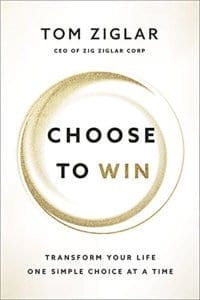
Choose to Win: Transform Your Life, One Simple Choice at a Time
Our parents can get us started but, at some point, we’ve got to take the ball and run with it. We’ve got to own that responsibility. Somebody says, “I see the truth in that. How do I develop a balanced success with my own life? What are the actual steps that I’ve got to go through?” That’s what Choose to Win does. It looks at our life from the very start, which is, “What’s the why?” Everybody’s why is a little bit different. What’s your why? Do you have it identified? Is it clear? Do you know where you’re going? Do you need help finding it? Once you get your why, it fuels and drives everything else.
We have seven areas of life. The middle part, the thick part of the book, is about the seven areas of life and the choices we make in each area that take us to where we want to go. That’s the mental, spiritual, physical, family, financial, personal and career. It’s a game plan. It’s a how-to. We had a debate with the publisher because I wanted to put journaling pages in the book. Publishers don’t like that. Now I know now why. It’s meant to dig in and do it. There’s a simple quote that’s the anchor quote of the book, “The fastest way to success is to replace a bad habit with a good habit.”
I have another quote, “A tree’s fruitfulness depends on its rootfulness.” What’s the fruit you want in your life? Write down all the fruits you want, peace of mind, good family relationships or prosperity. What are the roots that feed those fruits? We mention them. There are seven, mental, spiritual, physical, family, financial, personal and career. Those seven roots are always nourishing those fruits. What are the habits that you need to build in each one of those seven roots to automatically produce the fruit you want?
Is that the game plan that you have for everybody?
Yeah.
You can’t just say, “Be happy.” Do you know what that reminds me of? Did you ever see Bob Newhart’s Stop It? No matter what their problem was, he would go, “Stop it!” This is exactly what it is when you try to tell somebody, “Just do something.”
That’s one of the best videos ever.
I saw him speak at one of our events. I love Bob Newhart. This has been so great. You have so many wonderful ideas. What a task you’ve had assigned to you to try and continue that legacy because it’s an unbelievable thing that your father built. I could see you have so much of him in everything you do. It’s great that the Ziglar name continues to be so remarkable. A lot of people would want to know about how they could find your book and your company. Is there some site or something you’d like to share with everybody?
Go to Ziglar.com. Choose to Win is right there. You can get the book from us or you can get it from Amazon, Audible or Barnes & Noble, anywhere. If you come to our site, we’ll give you free gifts so check it out.
This was so much fun, Tom. Thank you so much for being on the show.
Thank you. It was fun.
Achieving Personal And Business Transformation with Kathy Ollerton Krafchow
I am here with Kathy Ollerton–Krafchow who is a coach, mentor, trainer and speaker. She’s passionate about helping people transform themselves and their businesses. She was the 40th woman in the world to have climbed Mount Denali. She built a school in Afghanistan and housed families affected by Hurricane Katrina. She has taught world leaders. She spent time at the White House after founding the World Transformation Center at Ground Zero. There are not a lot of things that Kathy hasn’t done. I’m excited to have her here. Welcome to the show, Kathy.
Thank you, Diane. I appreciate that.
I was having fun looking at your site. You’ve got some pictures of you doing different things. It brought it to life. I’m trying to figure out, is there anything you haven’t done? You have an interesting life. We’ve met through your husband. He and I worked at the board situation at DocuSign with Keith Krach in that group. He’s Ed Krafchow. You have six children and eighteen grandchildren. You’re an interesting person. I want to have a little background on you, how you got to be this big of an adventurer.
It was just going through, living my life and then when we retired and I did my bio, set everything up and set up a website, there was a lot. Other people will have that same experience. When you start compiling everything, it’s amazing. You didn’t realize you were doing as much as you were going along. The greatest thing is the eighteen grandkids. That’s a trip. We never expected that. We have our hands full, but it’s joy beyond the limit. You can’t even explain it. I don’t know how I fell into this, but I fell into it way back in the late ‘70s and early ‘80s. I had moved into San Francisco. There was this huge Human Potential Movement happening. I got swept up in that.
I had a personal breakthrough around the area of commitment. I created training around it. I went out to see if I could sell it. I worked for a marketing company. I had this idea of doing this. I went out to sell it and it was a horrible experience. I took a week off. If I could sell one account, I was going to go forward with this. At 2:00 on Friday afternoon, someone bought it. That was it. We took off and haven’t turned back yet. I’ve trained over 100,000 people since that time. The huge training in the ‘80s that slowed down in the ‘90s and the 2000s.
You’re still doing it. You’re consulting with top leaders and doing the transformation. That commitment led to other things. What programs do you do now?
[bctt tweet=”The fastest way to success is to replace a bad habit with a good habit.” via=”no”]I like to go in and start working with corporations. I start at the top, the CEO and the top executives. You get them aligned. Everyone has a business plan. That’s not the issue. What is mandatory in business is not only do you have a business plan, but you also have to have a personal development plan. That’s my area of expertise. Once they get their plan, their strategy and all of that, we can come in and go into the depths of the human being, of human experience and create personal breakthroughs that cause the things to move much faster. Usually, what happens is whatever it is that they were trying to accomplish, goal-wise, strategy or anything in that line, it will happen faster because the accountability is so big in our programs. It’s so prominent.
You have seven steps of accountability and purpose.
There are seven clear steps to accountability.
Do you want to cover those? If people can get a little background on that, it would be helpful.
Step number one is to be absolutely clear about what your goal, what your commitment was or your agreement. Sometimes people think they are clear but they’re not. This is if I’m holding someone else accountable. I would say, “Is this how you held it? Did you say that you would be at the meeting on time?” That’s a simple one. They would say, “I thought we could come later,” or, “I didn’t know it was like that.” They’ll give you a story. You stay with them until you get them to the point where they see whether or not it was an agreement. If they don’t have that then the step closes. You can’t hold someone accountable if they’re not clear. The second step is you say, “Did you keep it?”
That is hard for people to come to grips with to say, “I didn’t,” and to own it. They’ll go through all the things that got in the way, the story and everything. The third step is to say, “Could you have? Knowing what you know now, could you go back?” It comes off like a conversation. These are the steps in your head. You have to take them through the process. You can get to a place where you say, “Knowing what you know now, what would you have done differently?” You listen closely to what they say. If they’re doing anything, like putting the excuses outside of themselves, you wait until they say the word I. They might say, “My boss didn’t kill me,” or, “My secretary should’ve told me,” or, “My car broke down.”

Choose To Win: Assumption is the line you have to break through to get to intuition.
As soon as they say, “I didn’t want to come to this meeting. I’m not prepared. This is some of the things I didn’t want to face in my own department,” when we get to that level of truth, everything in the room changes. People see that we’re going to be in a state of truth and trust. We say, “Are you willing to abandon the idea or do you want to recommit to it? Do you want to let it go and not have meetings that start on time or do you want to recommit?” He goes, “Everyone’s here and they’re on time. I want to be on time. I’m in.” The last step is, “Can you forgive it?” You don’t even use that word sometimes. You say, “Can you let this go? It was just a snapshot of today. You’re not bad. You’re not wrong. You’re an amazing person. You’re integral to our team. You’ve already made so much contribution. Can you just shake it off?” They do. We move on. It’s clearing the space. That’s what it’s called. What I do is I create a context in an organization where people can come and get cleaned up. The space we want to create is the space of the truth because you’re looking at motivation and I found people are motivated when they’re in a state of telling the truth. If they’re in a state of pretending, you have to keep pushing, prodding and coaxing.
You said you’d read the book that I wrote. I dealt a lot with that with the fear factor. You don’t feel comfortable telling the truth sometimes and then that inhibits your curiosity, which inhibits your motivation. That ties exactly into the research I found.
What I got so much from your book that helped me so much is that curiosity is the opposite of fear. I always looked at fear as an emotion, which it is. It is. There are only two emotions, love and fear. I’ve set the opposite of emotion is excitement. Fear transformed is excitement. The mindset of fear like, “I can’t,” the mindset is curiosity. That was very insightful to me.
We’re both focused on doing the same things. We want to help people achieve their personal and business potential. There are so many ways to go about it. There are so many people who are held back by their fears. You were saying, “Can you let this go?” instead of saying, “Can you forgive it?” or whatever words. Do you think that we get stuck with these words and what things we tell ourselves? I had it as our assumptions and our voice in our head. We tell ourselves all these things. How do we get past that?
Assumptions are something I work a lot on. Assumptions are so powerful. We make assumptions about our self, either good or bad and we don’t even realize we’ve made it. The fact that we made it in high school or in grade school, it doesn’t change the fact that it’s going to control us in our state now. There are decisions and I have a whole scale on this. When you get down, assumptions is the line you have to break through to get to intuition. With assumptions, you create a literal reality based on that assumption that’s not even real.
Perception is a reality in so many ways in how we perceive the world. How are you dealing with these leaders who have to work with cultural issues in different countries and different areas if they’re perceptions are different from how they see each other?
[bctt tweet=”Human experience and personal breakthroughs cause things to move much faster.” via=”no”]That’s tough. You have to elevate to a very high level. It has to all be based on a vision and principles because the principles are universal. It’s the principle of commitment, vision, accountability and personal responsibility. Those principles will raise. Usually in an organization, if it’s flattened down, it’s because it’s moved away from principles. If we can bring the principles back in, it’s like a string and you can pull the whole thing up and put space in between everything to get things to move again and flatten it. You have to rise to a higher dimension. That’s what it is. What commitment does is it raises people’s intellectual thinking. It adds momentum and direction. If you can bring that into an organization and raise it, the cultural things don’t matter.
I used to do team building exercises. We would put them through this web. In some cultures, you couldn’t touch and you couldn’t bend over someone. There were so many things. We kept asking them, “Do you want to participate? You don’t have to. You can observe.” They would just sit there and say, “No. There’s something I need to get out of this.” Nine times out of ten, the cultural things would melt away and everybody would get into a place of principle. They would talk about it. The reason I got to Afghanistan is that I had a handful of Afghans in of these training when 9/11 happened. I said, “Please explain this to our group. What is the Taliban? Why did you think all this happened?” They were great teachers that day. They taught us. We understood a lot about different cultures. We also understood that we’re all the same. We did it in the context of being in a principled environment with truth and trust. It was valuable for everyone. That’s what kicked us off. I took 30 people to Ground Zero out of that very conversation.
I created a program for the girls in Afghanistan. I saw yours was for girls. You had one of the first classes that were ever taught there for girls.
It’s for 25 years. I built a school and a hospital because so many newborn babies were dying. All they needed was a facility where we could help them with the newborns. The girls hadn’t gone to school for 25 years. Our first class had girls in it that had been there. I stayed with some of the families. We did that for protection. When I would talk to the women, I say, “What do you do? These girls are going to be so far behind.” They said, “We taught them.” She pulled her a burka back. She was able to take it off in the house. She had been beaten. When she was caught teaching, they would beat her. I said, “What did you do?” She said, “I did it again the next day.”
Wasn’t that terrifying to you to deal in that situation? I had Roya Mahboob on my show. I had seen her speak. She was somebody I’ve known from my work with Forbes. She was voted by Time Magazine as one of 100 most influential people in the world. She created a way to train women in Afghanistan, a company to get them skills so that they can get online jobs. She taught them the internet. We went to dinner one night. She was under 30 when she’s doing this. She’s a very young girl at this time.
She was so motivational. I was talking to her. It’s inspirational. I said, “Weren’t you afraid that they were going to kill you? She said, “No. There are worse things than that.” I said, “What’s worse than that?” She said that they could bring shame to her family. She was more worried about that. She had to have her brothers as the face of the company for a while before she was able to do it on her own outside it. She was in New York. Her story was quite fascinating. Did you feel any fear for the things you were doing?

Choose To Win: As long as people are seeing themselves advance, they would be loyal, connected and engaged to the organization.
Yeah. We did. My poor husband wasn’t even going to turn on the TV. One time he came home from work and turned on the TV and I was talking with George Bush at Ground Zero. We took a risk. We were an NGO, non-governmental organization. We went in. We did have a very prominent family who’d be like a senator to make a correlation counterpart. That was the Mojadidi family. They protected us. They moved out a family. We stayed in a home. They had someone at every door, a fellow. They’d have a young gentleman at every door. We are protected. We have always moved around in a circle. After we dedicated the school, they had a luncheon for us. We were sitting on the floor. Do you know how when you sit on the floor and it kills your leg? I stretched out a little bit. I had on socks and shoes, but a little bit of my calf showed.
They came running over and said, “Cover up. Cover up.” Do you know how hot it was? We were there in July. It was 127 degrees Fahrenheit. We’re in full-on clothing, scarfs and down to our ankles, down to our wrists. I was hoping I could go with sandals but they said no. I had to wear socks. The only socks we could find where these big wool socks. Those women are strong. You might think they’ve been suppressed and all that, but no. They get things done, even if it’s underneath. I learned a lot from them. I brought three Afghan dignitaries back to a conference in Utah. Attorneys would volunteer their time to help them write constitutions that would protect personal and religious freedoms. They brought their wives. I spent two weeks with these three dignitaries and their wives. It’s amazing how strong they were and how much they appreciated that work, to have the ability made an impact on their constitution.
You’ve done so many things and you mentioned quickly that you were at Ground Zero. How did you get involved with that?
I called for three months trying to find a project. I called the Ports Authority. I called the mayor’s office. I said, “We’ll fill out our insurance papers. We’ll sweep. We’ll clean. We’ll do whatever.” It was difficult to get in to be a volunteer because there was so much red tape. I heard about this school. I called the principal. It was Leadership and Community Service High School. I said, “We had to be moved out. We’re coming in.” She said, “I just said a prayer and you answered. I had these 40 people lined up to go work. We couldn’t find any work to do.” We went to that school and we mentored them. We were going to do one workshop. We ended up doing ten. We flew back and forth.
We raised funds and got most of them into either colleges, scholarships into things like chefs’ schools, cosmetology or whatever they wanted. We got 86 out of 106. St. Paul’s Church had been hit, but it was still standing. That’s where the rescue workers would come up from the pit. They’d go in there. They turned it into a sanctuary where we would feed and sleep with them. The main thing is that we were skilled in trauma diffusion. We could sit and work them through. Some of those guys, when they would go down and find a body, it was hard on them. They’d have to come back. They’d sit in the pews of this church and we would debrief them. Sometimes all we do is sit but most of the time, we prayed. We were skilled in that. Our team had been certified. That’s what we did.
You’ve done a lot of things that are not exactly easy to do. That’s very challenging emotionally. You stay overnight. You do these things. You’re hiking in the hardest climbs. Where is this background coming from? What was your childhood like that you got this stamina and desire to do all this?
[bctt tweet=”People are motivated when they’re in a state of telling the truth.” via=”no”]I love that you taught me about curiosity. I was always curious. I always wanted to do something. My background was a family of six. What I was most curious about was finding the truth. There was a big secret in our family. I didn’t ever deal with it until I was in my mid-twenties. I wanted to find out what happened. I pushed and pushed until I broke the whole thing open. It was a transformation of our whole family. That’s how I learned how to transform organizations is because you have to understand family dynamics and the next level is the organization. That’s about it. It was that quest for the truth. It was eating at me daily at a certain window of time. We got to the bottom of it and opened it all up. There was a lot of shame around it and taboo and a lot of things like that. We as a family went through it and we did great.
You’re married to Ed Krafchow who is a very successful CEO. Did you learn a lot from him?
Yes. He and I were along the same lines but how I met him is he was in my seminars. He went through a lot of them. I was consulting with a real estate company when he joined. We trained him as an agent intimate management and then I finished my project with that company. They put him in as the general manager. We met up a couple of years later and we were both getting divorces. I was almost divorced. He was in the process of getting it. We started dating.
Now you have all these children and grandchildren.
He was aligned with my thought process. I was aligned with everything that he was doing out of his work. His background was in the sciences of religious history. It was interesting. He was always interested in Middle Eastern things. I was working with a lot of real estate companies because it was difficult at that time to understand how to inspire people who weren’t on salaries. That’s how we learned so much on how to keep everyone inspired and to personally keep them growing. As long as they were doing that, they would be loyal, connected and engaged to the organization, as long as they saw themselves advance. I learned a lot. Ed and I are very aligned. We’re two powerful people. I did a lot of work in the organization when he took it over. We had 365 people in it. At its highest level, there was over 5,500. There was an alignment there with him bringing me into that organization. He’s an amazing person. I don’t think I found the depth of his intellect yet. He has such a fertile mind. He’s always got ideas. He’s always thinking. He has a great impact on people.
I was so glad when he suggested that we connect. It has been fun to get to know you. We had a chance to talk before. We have the same love of Hawaii. You have places in San Francisco, Idaho and Maui. I love all those locations. I was in Coeur d’Alene. I loved that. We’re going to Maui.
In our home there, they are doing a reality TV show. We’re out of there for ten weeks.
What show?
It’s a reality TV show. I was invited to come and help in the production. It came out of the curiosity thing. I said I’ve always been curious about how these things get handled behind the scenes. We’re at dinner and the producer said, “You’re the one person that we will let on the set.” I’ll go in and we’ll catch up.
If people are reading this and if they want to hire you for consulting and speaking and all the stuff you do, how can they reach you?
I have a website, KathyOllerton.com. They can go there. There’s a calendar. They can set up an appointment.
It’s a great website. I love the pictures. I love the whole setup of it. This was so much fun, Kathy. Thank you so much for being on the show.
Thank you for the opportunity, Diane. I’m your greatest fan. I’m rooting for you to keep going.
—
I’d like to thank both Tom and Kathy for being my guests. We get so many great guests on this show. If you’ve missed any past episodes, please go to DrDianeHamiltonRadio.com. You can go to DrDianeHamilton.com and go to the radio podcasts and every bit of information from that site. It’s the easiest way to get to everything. You can get to Cracking the Curiosity Code, the whole system of taking the Curiosity Code Index, the training and all that stuff that you’d need to become certified. Everything could be found there at CuriosityCode.com. I hope you enjoyed this episode. I hope you join us for the next episode of Take The Lead Radio.
Important Links:
- Kathy Ollerton-Krafchow
- Ziglar Inc
- Choose to Win
- The Ziglar Show
- iWoz
- Seth Godin
- Born to Win
- Ziglar.com
- Tom Hopkins – Previous episode
- Bob Newhart’s Stop It
- Amazon – Choose to Win
- Audible – Choose to Win
- Barnes & Noble – Choose to Win
- KathyOllerton.com
- DrDianeHamiltonRadio.com
- CuriosityCode.com
- Roya Mahboob – Previous episode
About Tom Ziglar
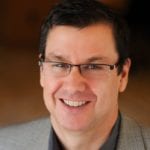 Tom Ziglar is the proud son of Zig Ziglar and the CEO of Ziglar, Inc. He joined the Zig Ziglar Corporation in 1987 and climbed from working in the warehouse, to sales, to management, and then on to leadership. Today, he speaks around the world; hosts The Ziglar Show, one of the top-ranked business podcasts; and carries on the Ziglar philosophy: “You can have everything in life you want if you will just help enough other people get what they want.” He is the author of Choose to Win.
Tom Ziglar is the proud son of Zig Ziglar and the CEO of Ziglar, Inc. He joined the Zig Ziglar Corporation in 1987 and climbed from working in the warehouse, to sales, to management, and then on to leadership. Today, he speaks around the world; hosts The Ziglar Show, one of the top-ranked business podcasts; and carries on the Ziglar philosophy: “You can have everything in life you want if you will just help enough other people get what they want.” He is the author of Choose to Win.
About Kathy Ollerton Krafchow
 Kathy Ollerton Krafchow is a coach, mentor, trainer, and speaker, passionate about helping people transform themselves and their businesses. She was the 40th women in the world to have climbed Mountain Denali, she built a school in Afghanistan, housed families affected by Hurricane Katrina, taught world leaders, and spent time at the white house after founding the World Transformation Center at Ground Zero.
Kathy Ollerton Krafchow is a coach, mentor, trainer, and speaker, passionate about helping people transform themselves and their businesses. She was the 40th women in the world to have climbed Mountain Denali, she built a school in Afghanistan, housed families affected by Hurricane Katrina, taught world leaders, and spent time at the white house after founding the World Transformation Center at Ground Zero.

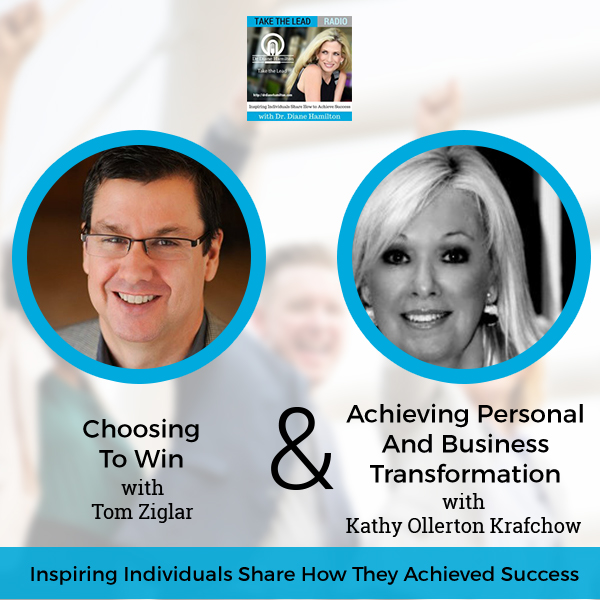
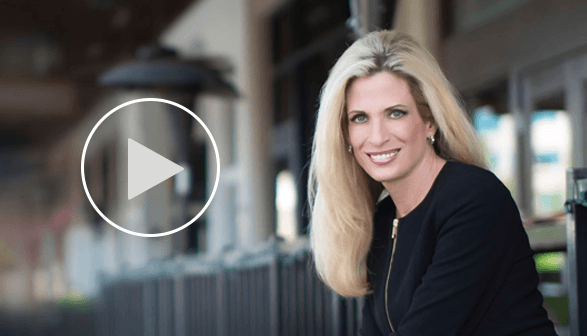
0 Comments